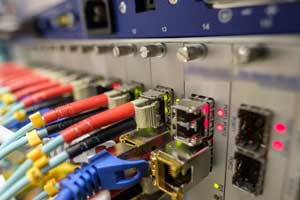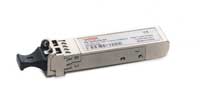The Background:
In our data driven world, bandwidth demand continually increases. If you’re a network operator, the bandwidth of your infrastructure needs to grow to match. That means upgrading to a higher operating speed. At the same time, you need to continue operating the assets you already own. Maintaining networks at two different speeds means supporting two different sets of equipment. The traditional approach is to stock spare transceivers at both data rates. The problem is that it ties up capital in inventory. Worse, you could be left with a surplus inventory of transceivers at the lower data rate once your infrastructure transition is complete. Fortunately, there is a solution for this problem: dual-rate transceivers.
Related Article: Dual Rate Transceivers – An Overview
Dual-rate transceivers give operators the flexibility to support networks at two different speeds with the same component. You can maintain a smaller inventory for sparing while addressing network needs, whether that involves buildout or repairs. Changing data rates just involves a simple configuration step.
That’s the good news. The challenge is getting your dual-rate transceiver to work in a legacy switch, but we have an answer for that, too.
The Problem:

A data center customer wanted to upgrade half of their backbone while continuing to port into legacy equipment at a different location. They wanted 10G switches for the upgrade but still needed to tap into 1G switches on the other side of the network. It was the perfect scenario for a dual-rate transceiver that was capable of operating at both 1G and 10G. The problem was that they could not get the switch to recognize the transceivers.
The network involved a Cisco switch that is designed to operate in automatic detect mode. The operator plugs the transceiver into the port, the switch detects the data rate and automatically adjusts to operate at that rate. The problem was that the switch had recently undergone an OS upgrade to version 6.3.1. The customer plugged in the transceiver, but the automatic detect mode didn’t work.
The solution:
We started the troubleshooting process by running a digital diagnostics monitoring (DDM) test. This let us confirm that the voltage was correct, there weren’t any issues with the transceiver or the switch. Next, we had them run an interface log, which showed us how all of the parameters were defined. A quick look at the log showed the problem.
Cisco has traditionally used a two-port ID – a port could be either defined as SFP or as QSFP. If you plugged a 1G transceiver into the port, it would work as a 1G port. If you plugged a 10G transceiver into the port, it would work as a 10G port. When Cisco upgraded the OS to version 6.3.1, however, they doubled the number of port designations to four: 1G Ethernet, 10G Ethernet, 40G Ethernet, and QSFP28, which is basically 100G ethernet. In general, that’s good news, because it gives a lot more flexibility to the user. The problem is that in making that change, they also modified the IDs. That was where the conflict arose.
There are a couple of ways to address this problem. The first way is to modify the OS code to force the switch to auto detect. This would return it to the earlier behavior – when a transceiver was plugged in, the switch would detect the data rate and adjust accordingly. This is a straightforward solution, but the customer wanted a fix that left the source code unchanged.
The approach we used was to just apply the port parameters to the OS interface so that the switch would work for the 1G Ethernet application. If the customer needed to upgrade to 10G in the future, they would just go back into the interface and change the parameter again. Once they knew how to modify these parameters, they could toggle back and forth at will.

In today’s market, flexibility is essential. If you’re looking to operate legacy equipment with a Cisco switch but want a path to upgrade, consider using a dual-rate transceiver. Even if you are operating with the most recent version of the OS, you only need to modify the port parameters to switch from one to the other. So, if you think you’re locked into using one transceiver per data rate, think again: Dual-rate transceivers can save you money, time, and effort.
Vitex offers high performance 100G/40G, 25G/10G and 10G/1G Multi-Rate transceivers. For questions on dual rate transceivers and how to use them in your network, contact us at info@vitextech.com.
Related Products

